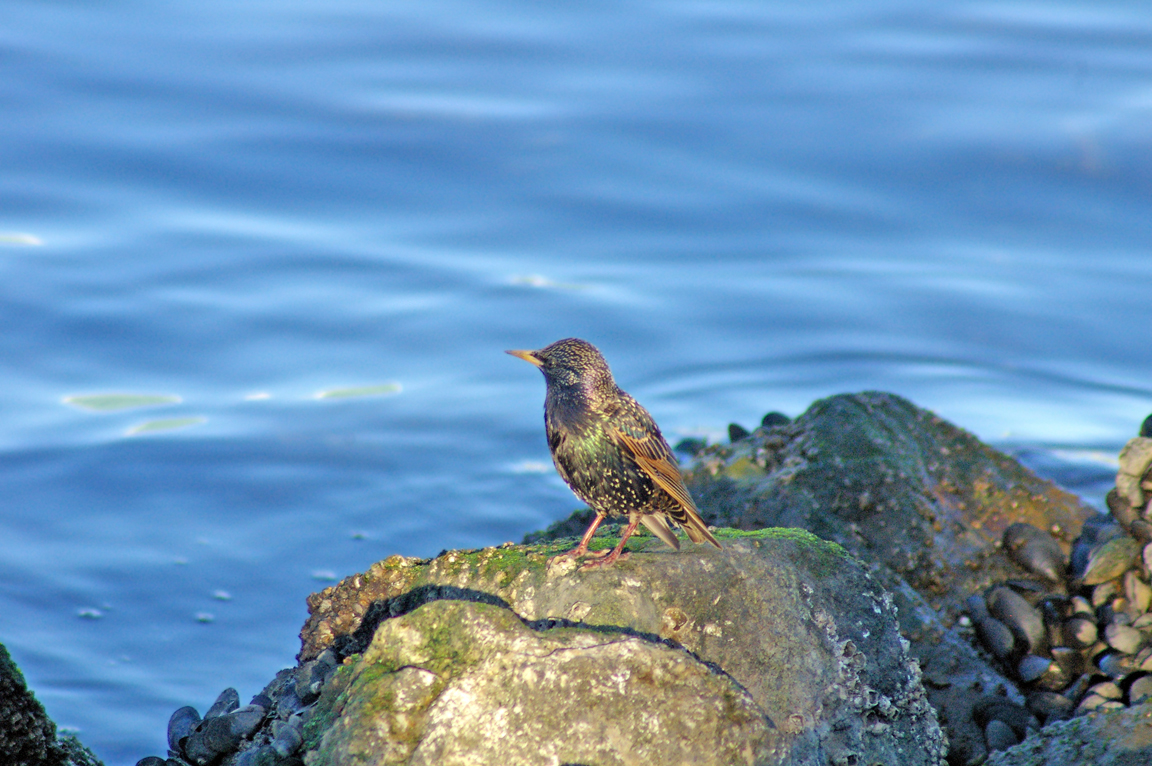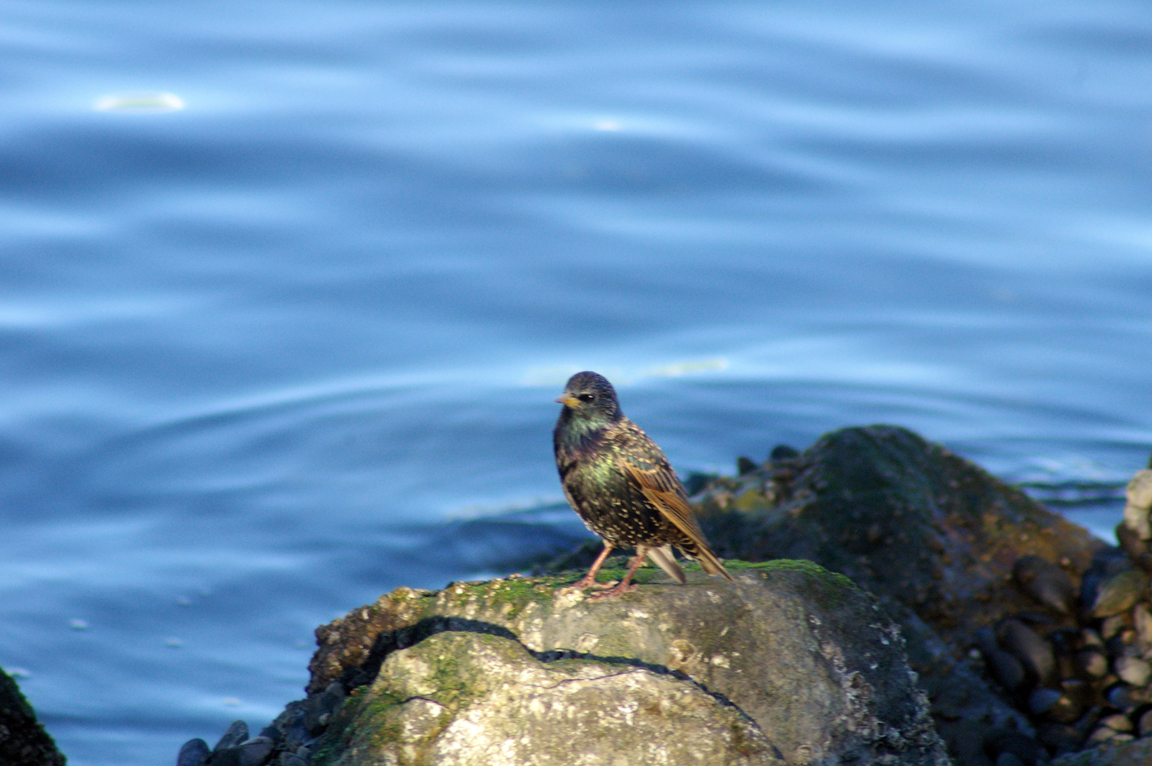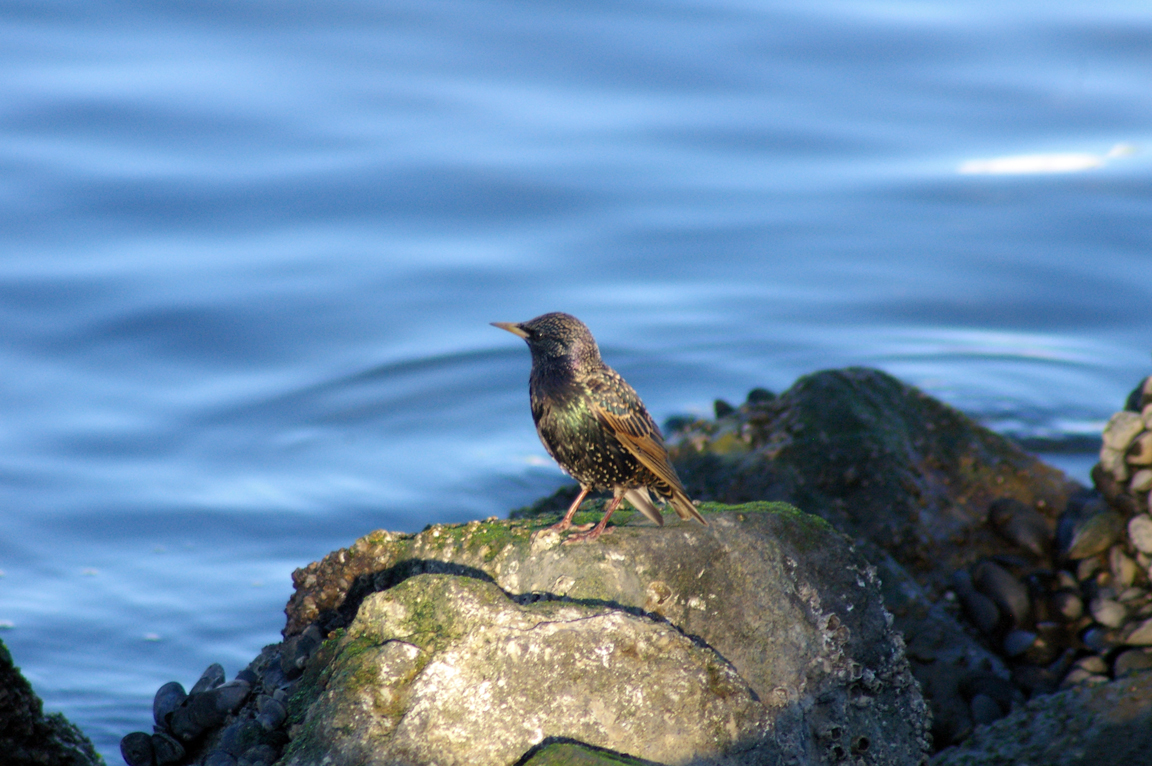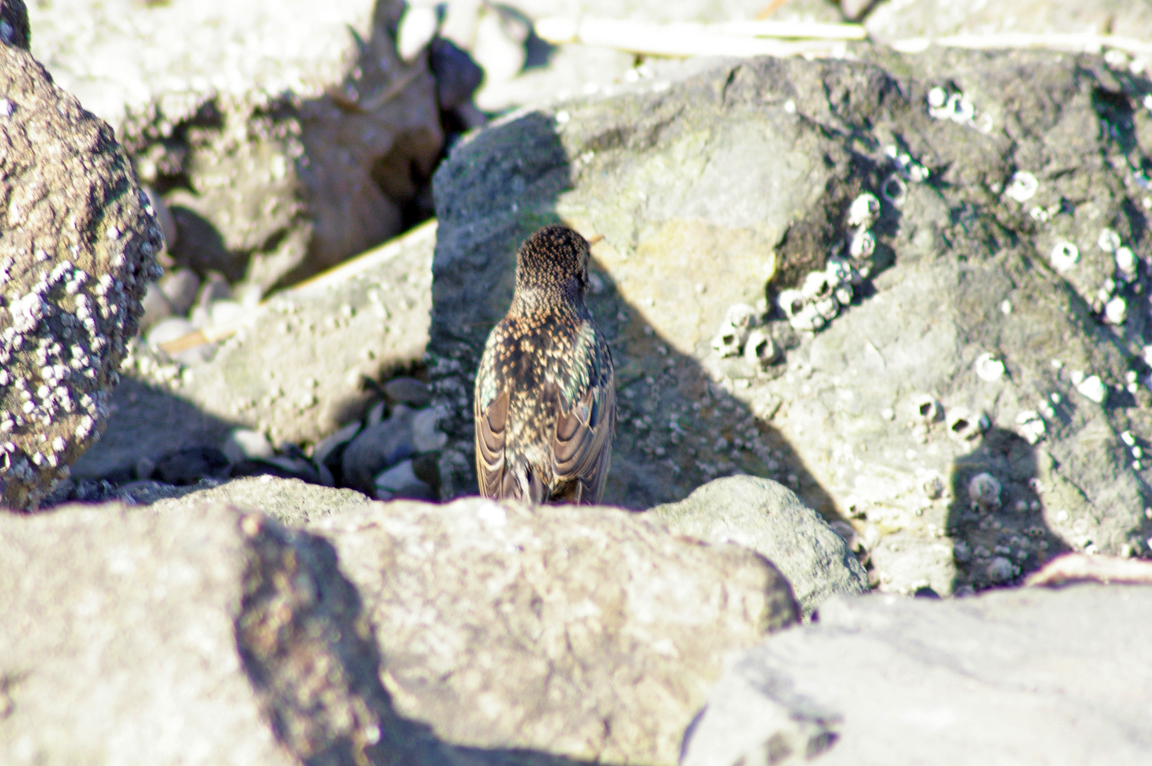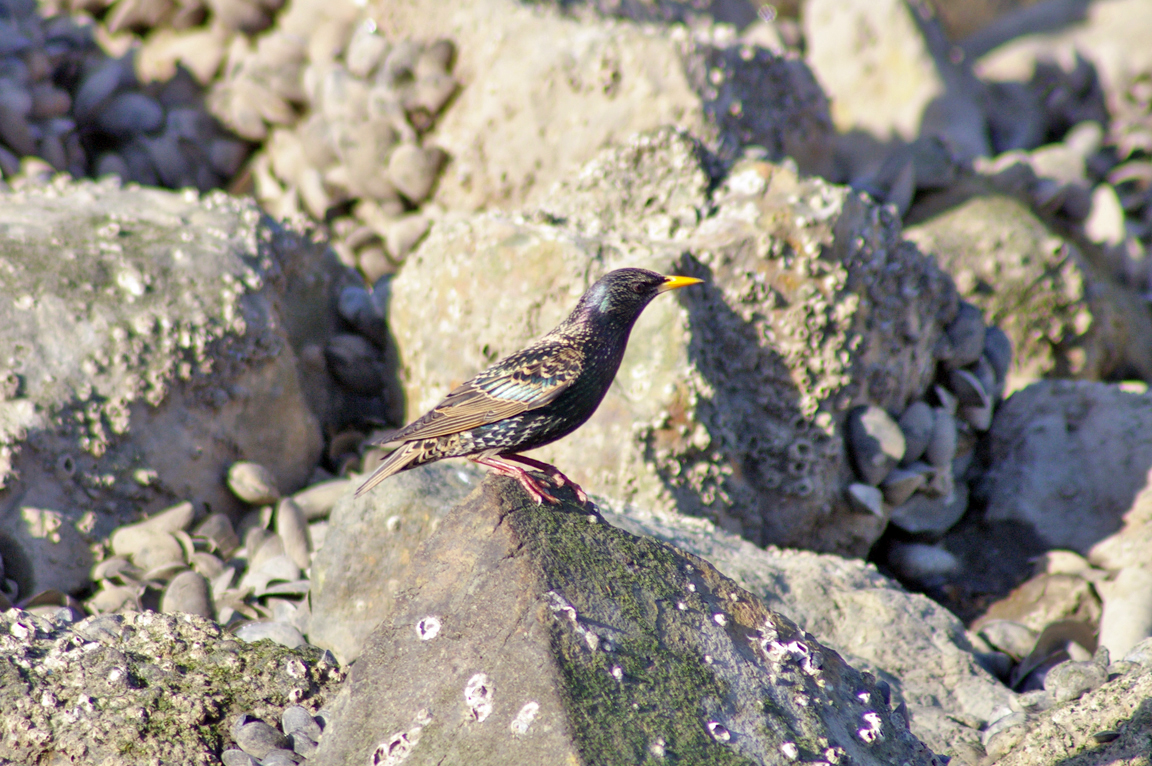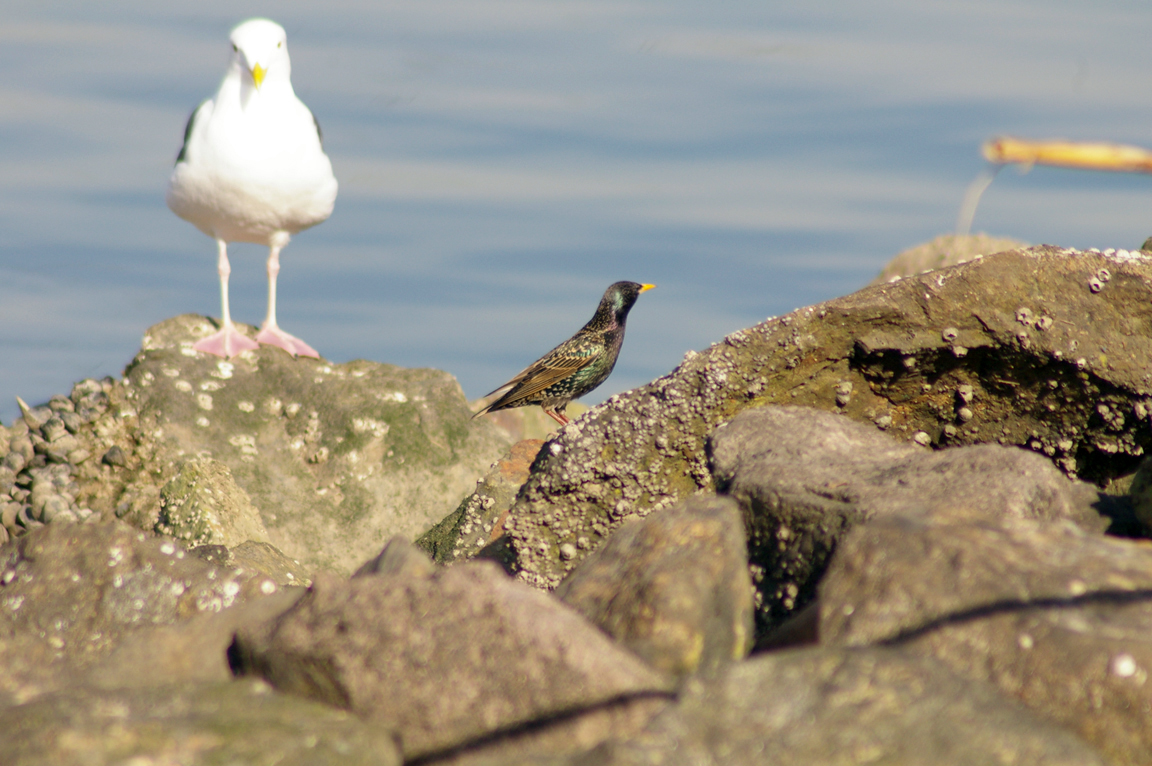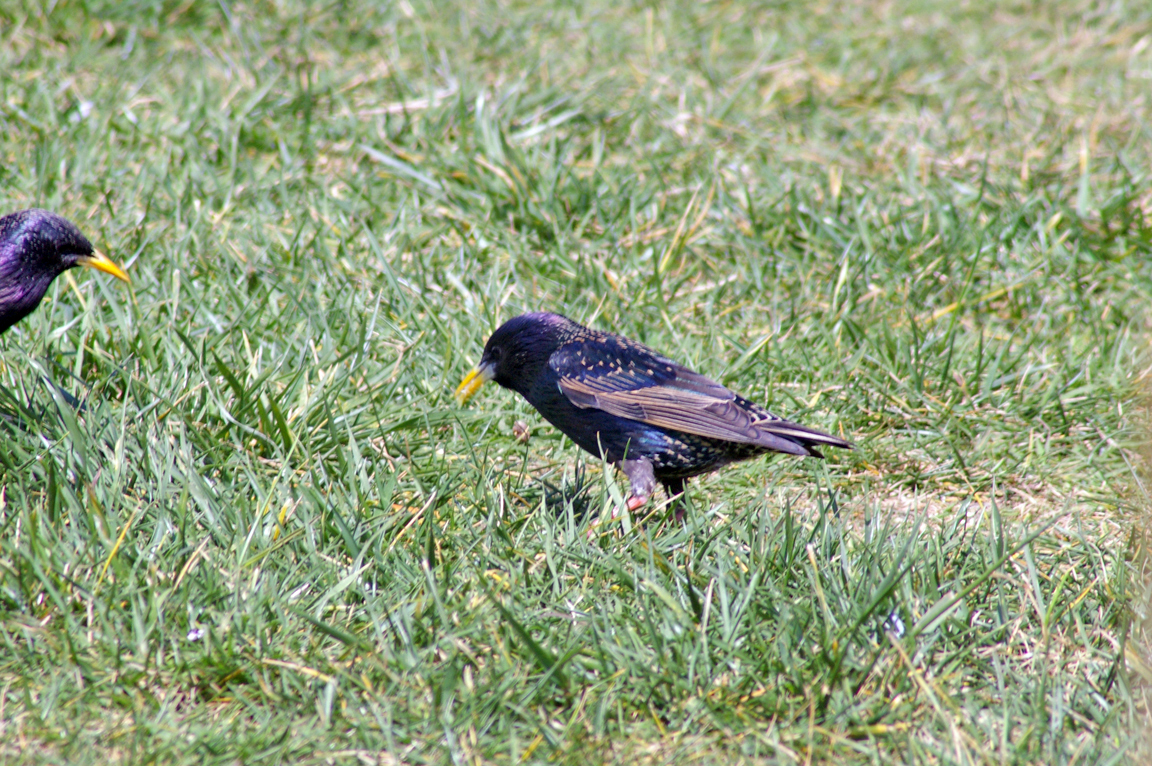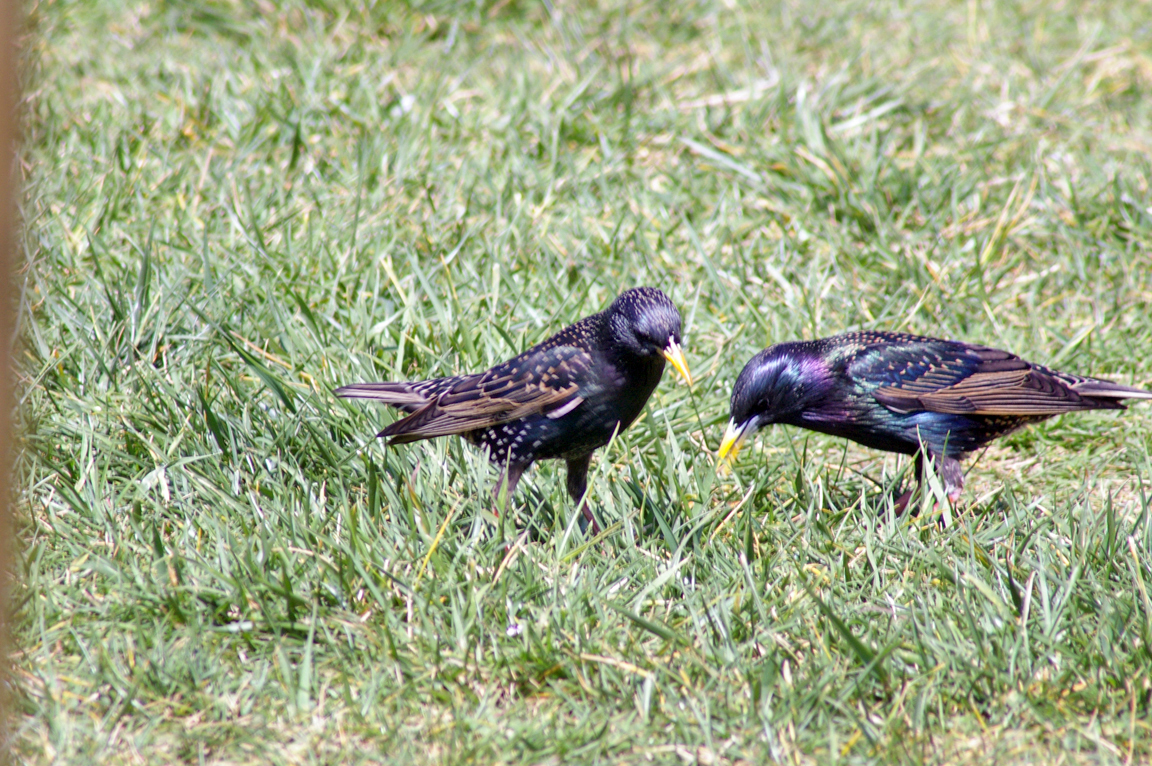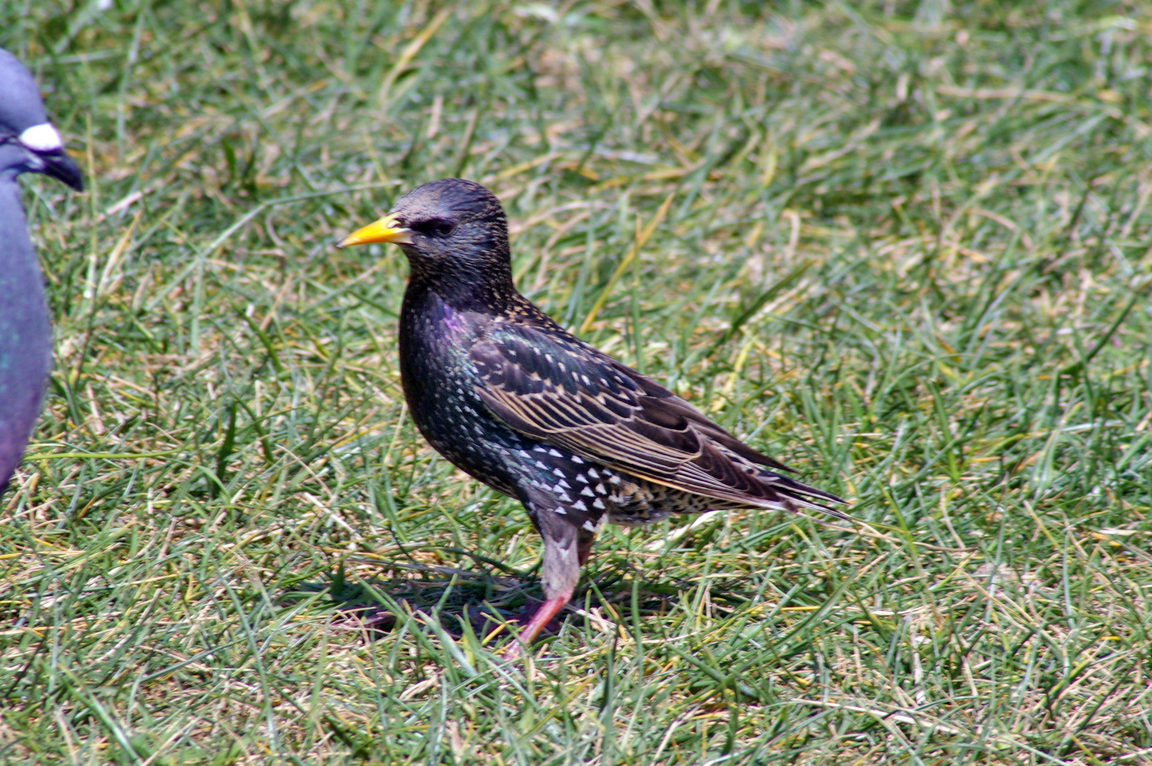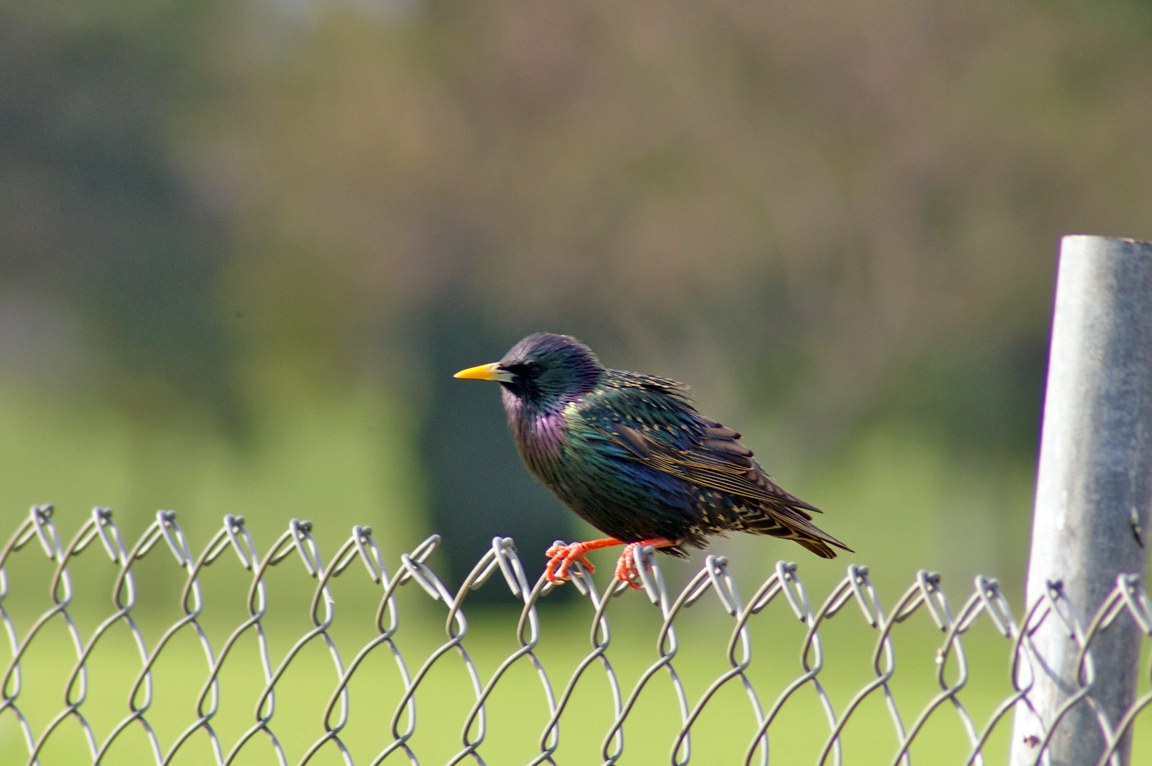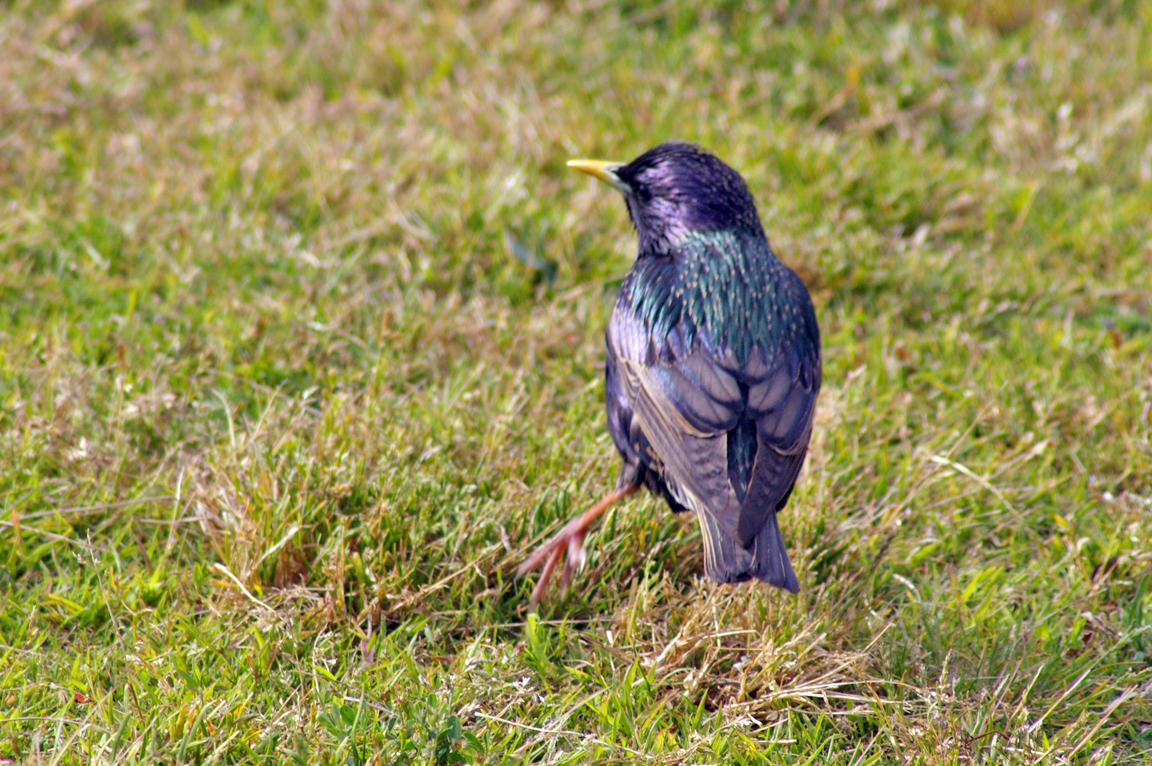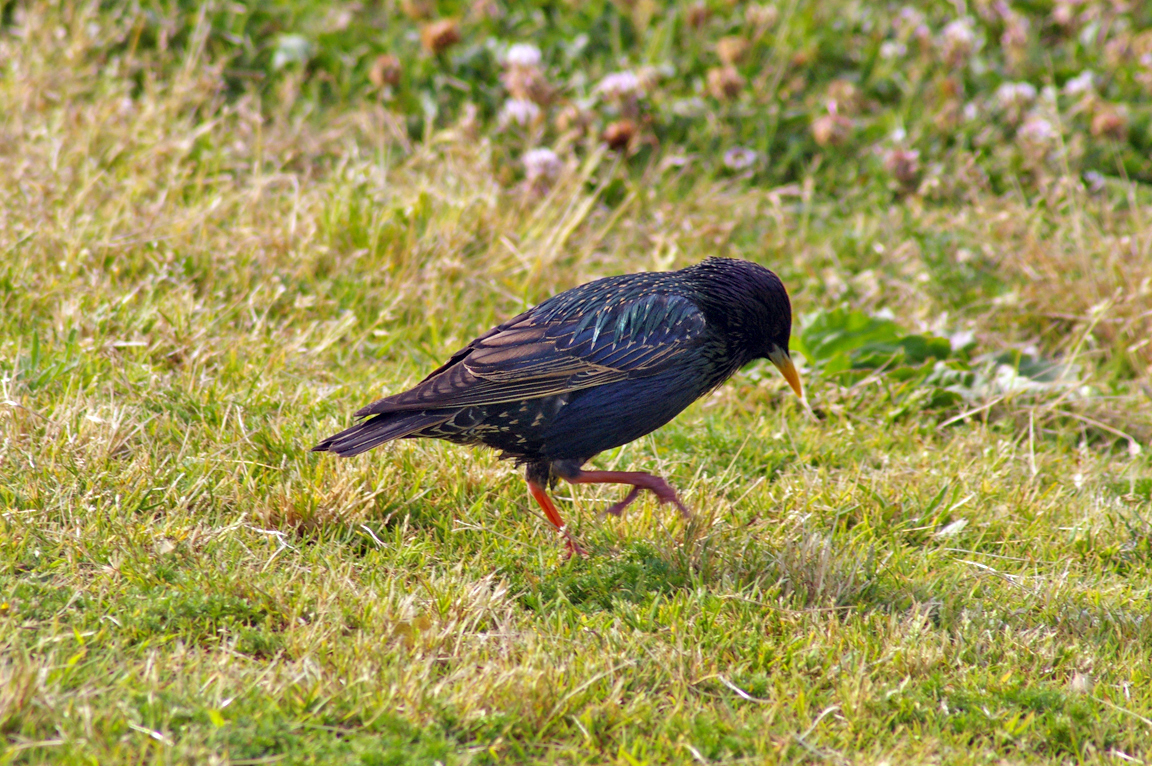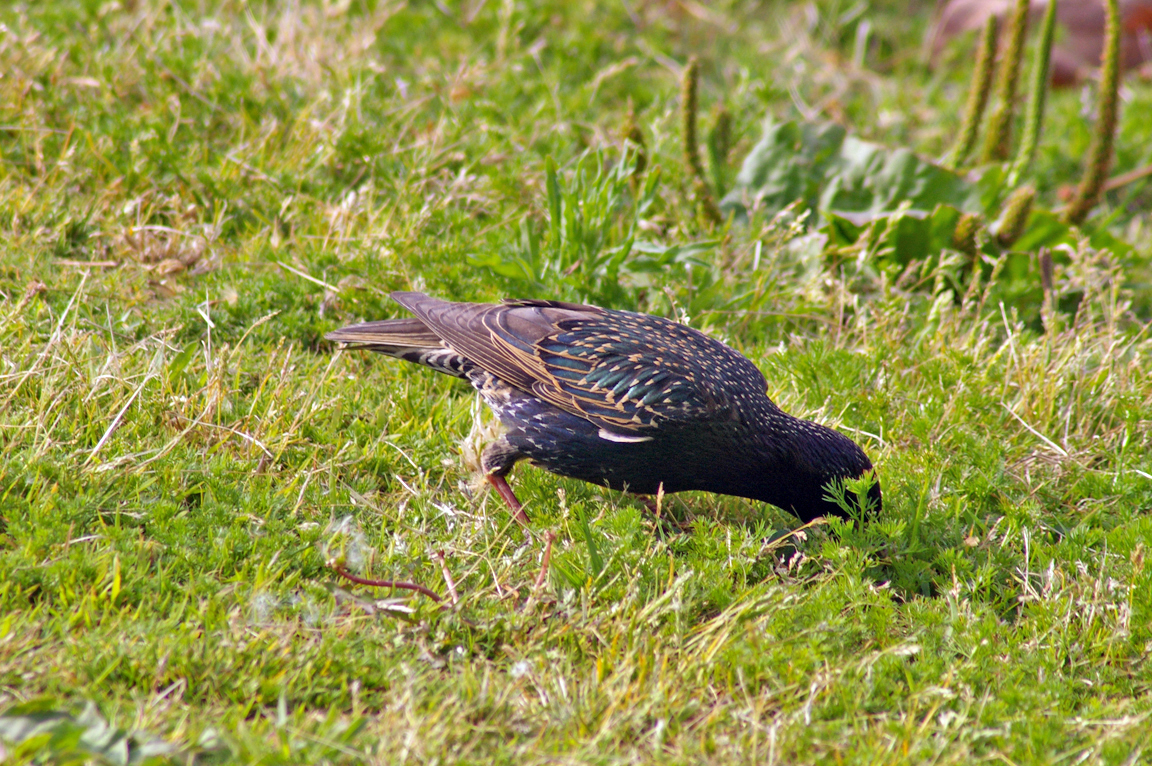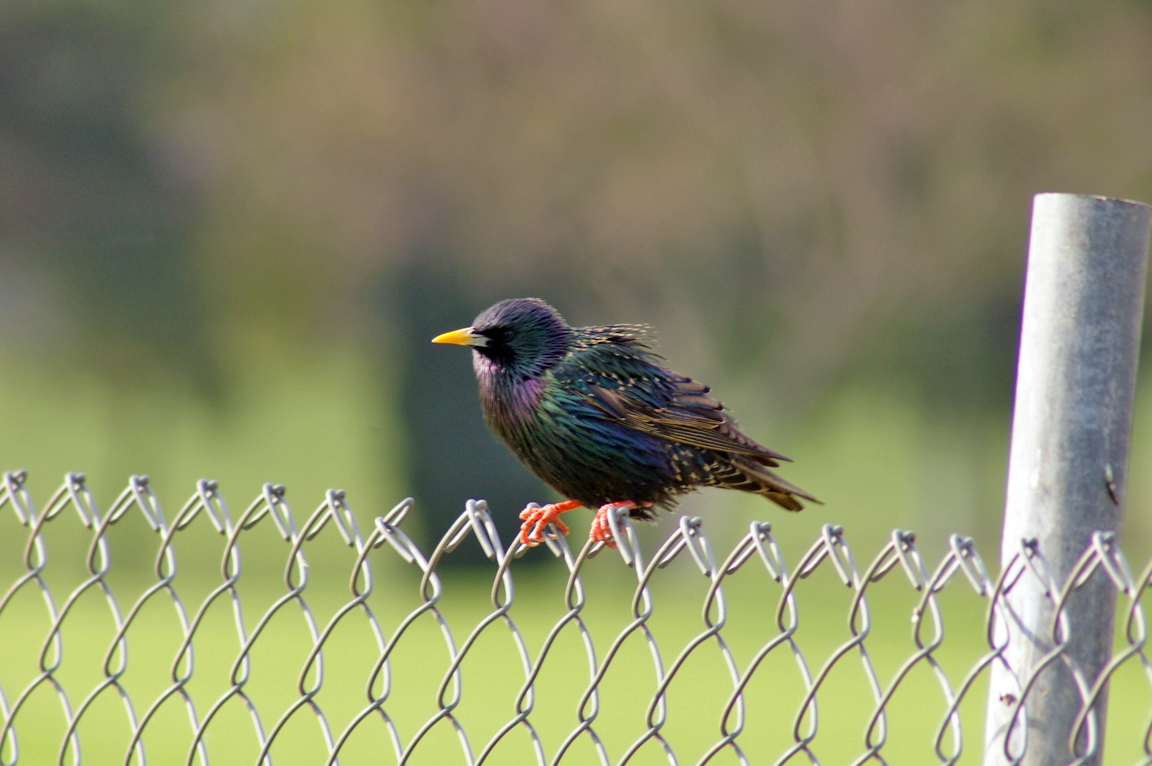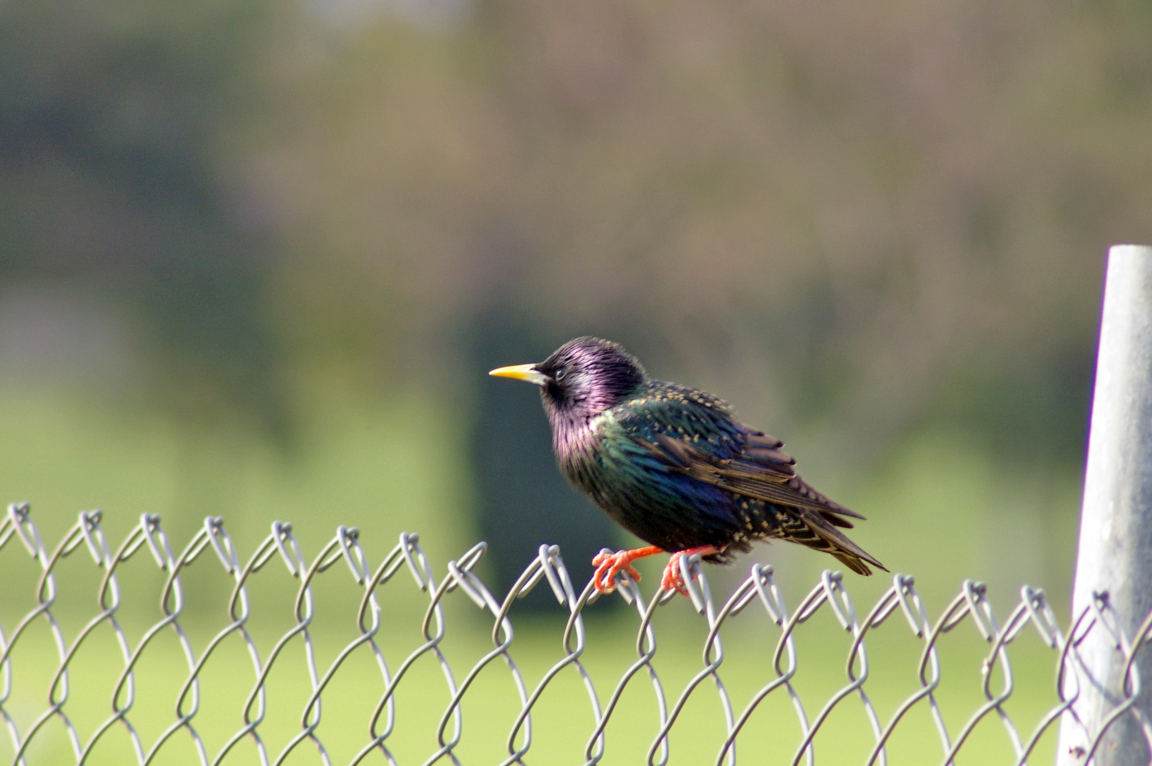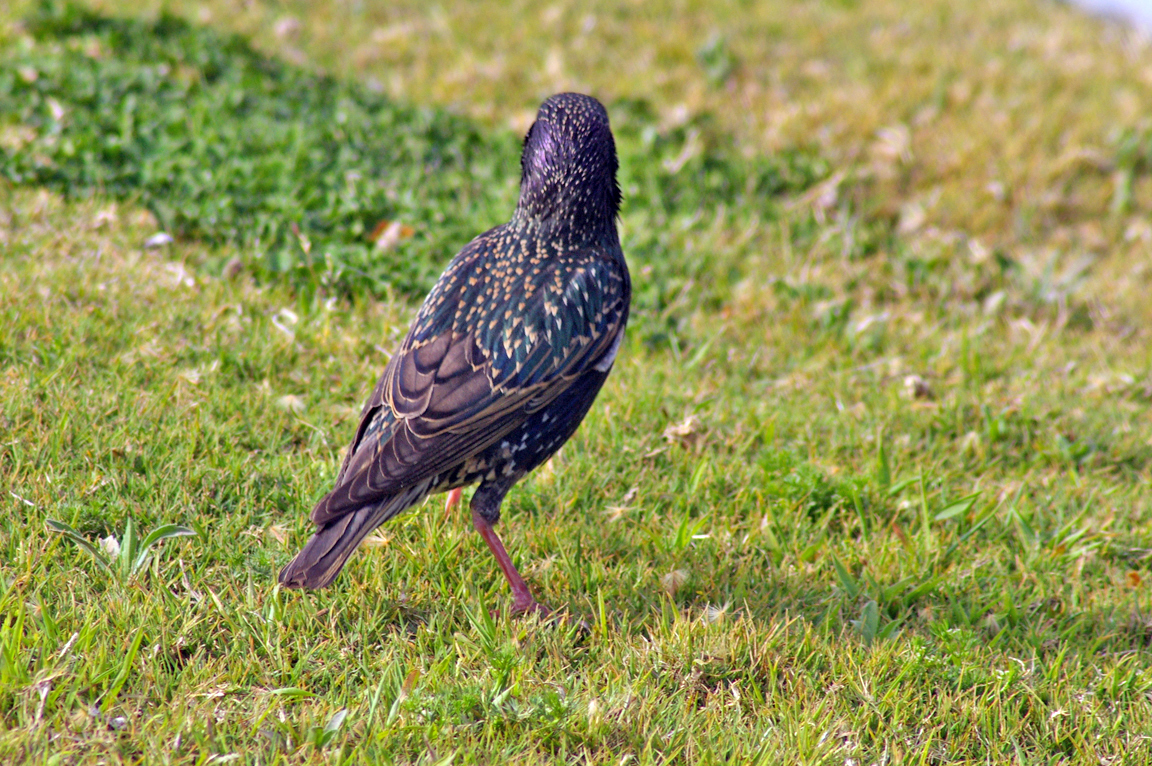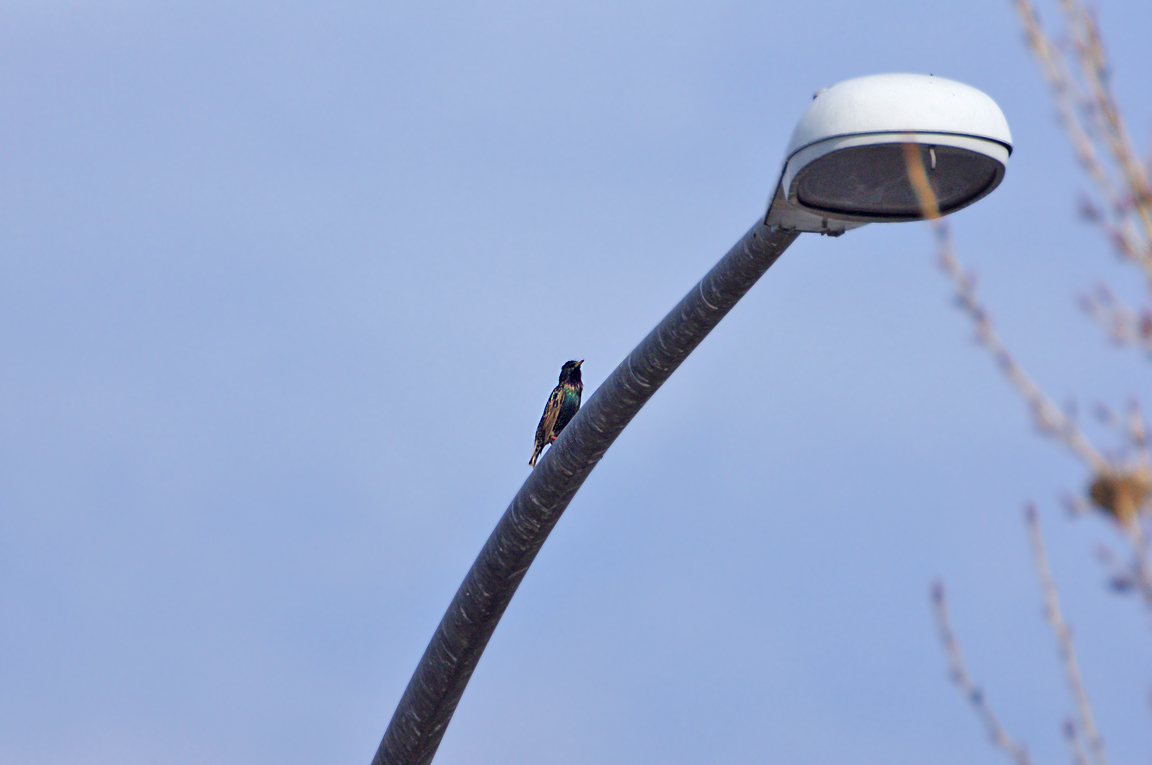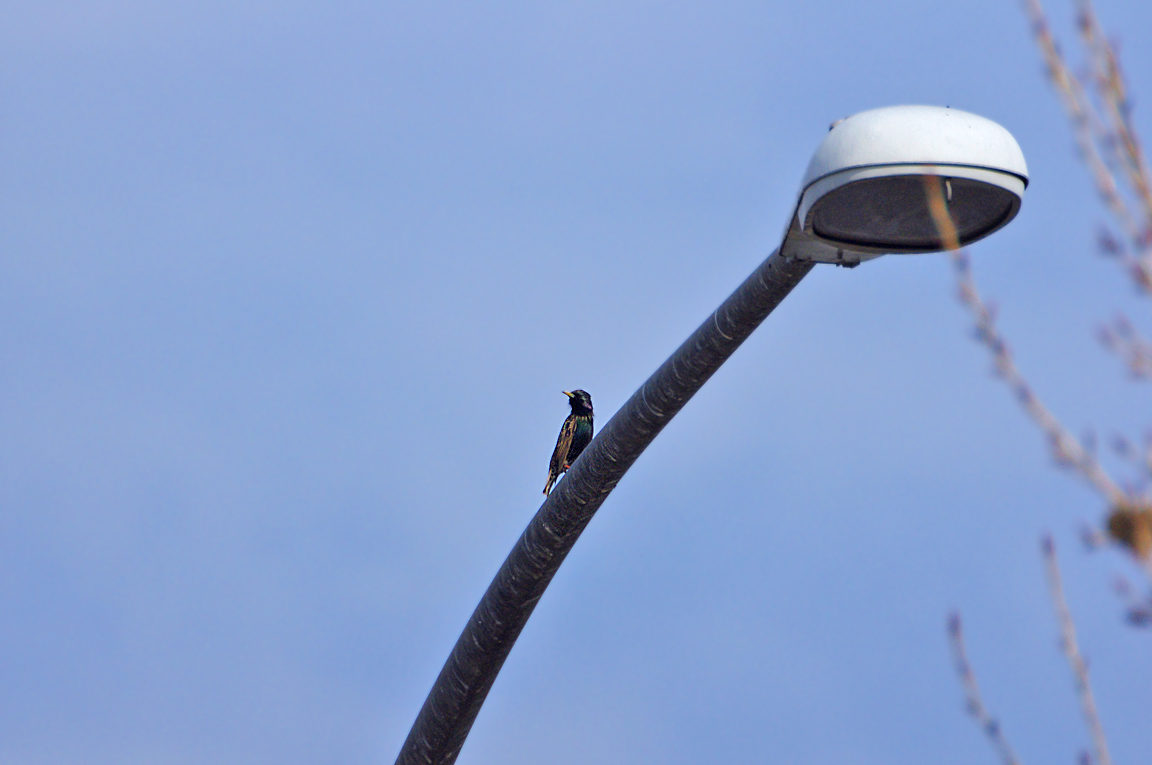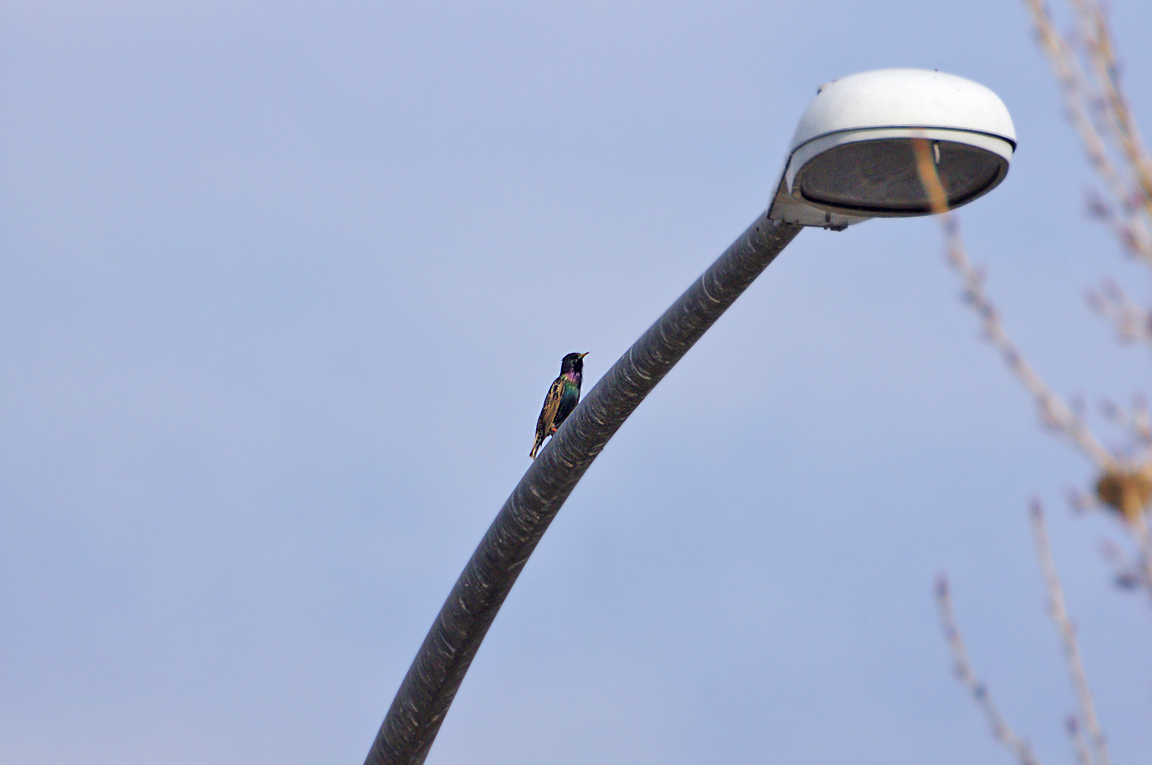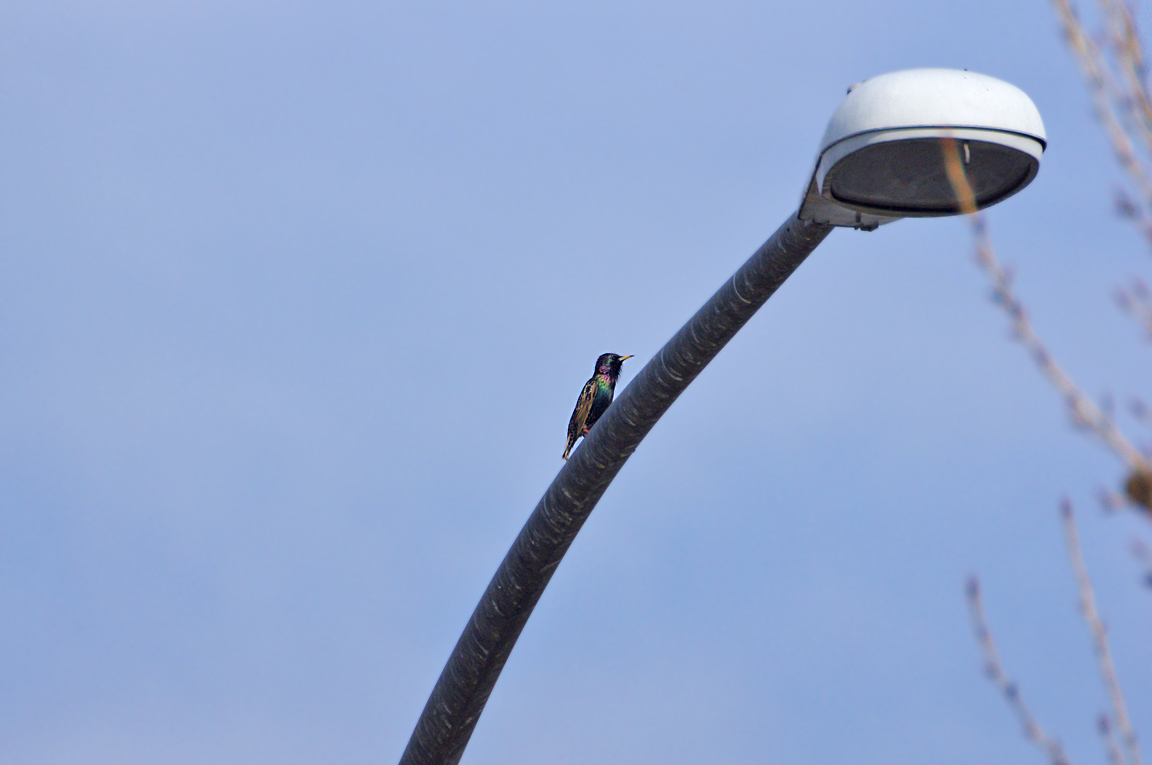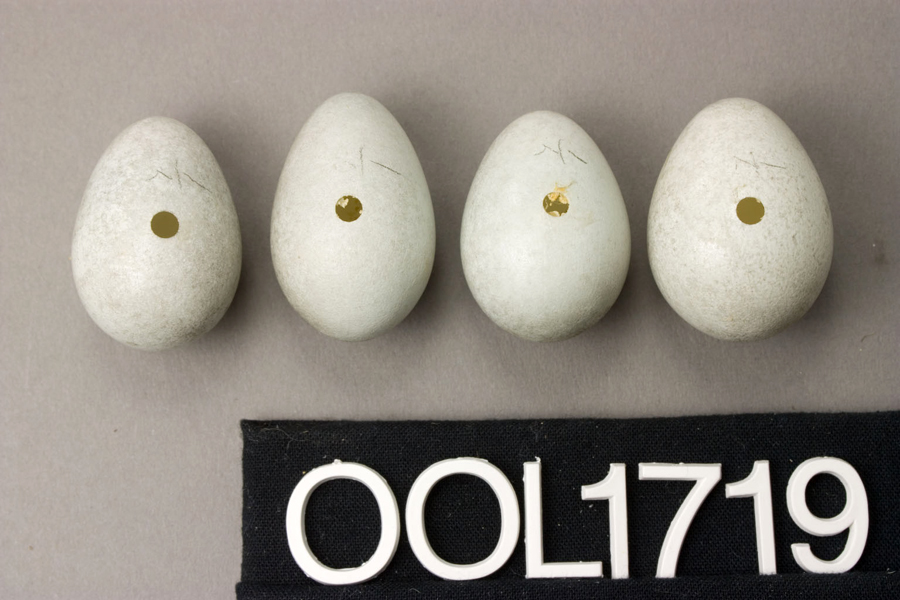|
|
|
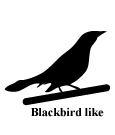 |
European Starling
|
| Sturnus vulgaris | |
Beginning with 100 individuals introduced into Central Park in New York City in the early 1890s, the European Starling has become one of the most numerous birds on the North American continent. Its successful spread is believed to have come at the expense of many native birds that compete with the starling for nest holes.
Interesting Information
-
All the European Starlings in North America descended from 100 birds released in New York's Central Park in the early 1890s. A group dedicated to introducing America to all the birds mentioned in Shakespeare's works set the birds free. Today, European Starlings range from Alaska to Florida and northern Mexico, and their population is estimated at over 200 million birds.
-
Although the sexes look very similar, they do show some subtle differences. The male tends to be larger, more iridescent, and have longer throat feathers, but some females can be larger, more glossy, and have longer feathers than some males. During breeding when they have yellow bills, the base of a male's lower mandible is blue-gray, while the female's is pinkish. The male's eyes are a uniform deep brown, but the female has a narrow, lighter colored ring around the outer edge. In confusing cases, some males four years old or older can develop a faint ring in the eye, and some older females can lose it.
-
A female European Starling may try to lay an egg in the nest of another female. A female that tries this parasitic tactic often is one that could not get a mate early in the breeding season. The best females find mates and start laying early. The longer it takes to get started, the lower the probability of a nest's success. Those parasitic females may be trying to enhance their own breeding efforts during the time that they cannot breed on their own.
Description
Adult Description
-
Size: 20-23 cm (8-9 in)
-
Wingspan: 31-40 cm (12-16 in)
-
Weight: 60-96 g (2.12-3.39 ounces)
-
Stocky, black bird.
-
Short, square-tipped tail.
-
Pointed, triangular wings.
-
Long pointed bill, yellow in breeding season.
-
Shimmering green and purple feathers in spring.
-
Wings black with brown edges.
-
Body feathers long, thin, and pointed.
-
Undertail feathers broadly edged in white.
-
Eyes dark brown.
-
Legs reddish brown.
Sex Differences
Sexes Similar
Immature
Juvenile drab gray-brown all over, shaped like adult. In the fall, molting birds may have patches of gray and black.

Photo taken from: The Sibley Field Guide by David Allen Sibley
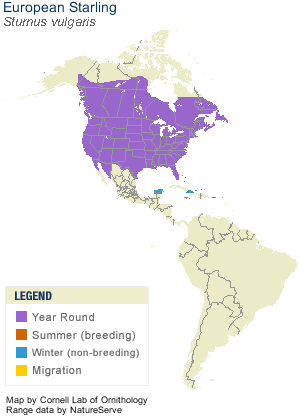
© 2003 Cornell Lab of Ornithology
|
Habitat |
|
Uses a variety of habitats with open country, fields, and trees for nesting; especially near people in agricultural and urban areas. |
|
Behavior |
|
Forages in open, grassy areas. Feeds in large flocks, often with blackbird species. |
|
Food |
|
Broad diet of many kinds of invertebrates, fruits, grains, seeds, and garbage. |
Taxonomy
| Kingdom: | Animalia |
| Phylum: | Chordata |
| Subphylum: | Vertebrata |
| Class: | Aves |
| Order: | Passeriformes |
| Family: | Sturnidae |
| Genus: | Sturnus |
| Species: | Sturnus vulgaris |
| Subspecies: | Sturnus vulgaris vulgaris |
Similar Species |
|
|
Bird Sound |
|
Song is a rather quiet series of rattles and whistled notes, often containing mimicry of other bird species. Flight call a purring "prurrp." |
|
Eggs look like this |
|
Photo taken from: ARCTOS Collaborative Collection Management Solution |
Videos
European Starling
Up close and personal
